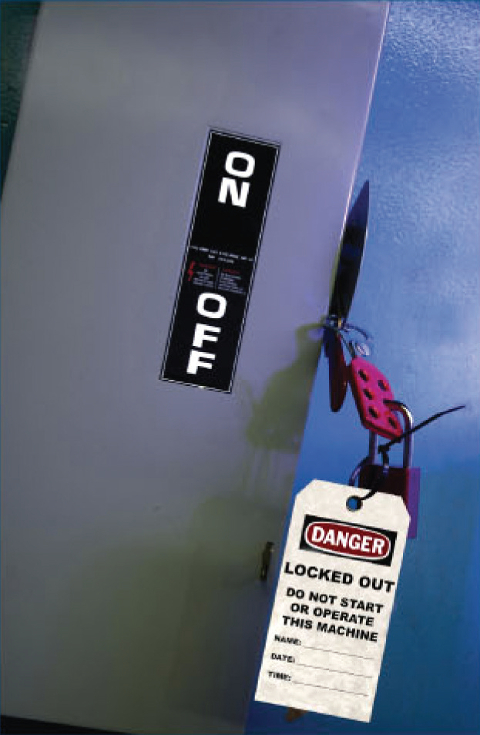

| Topic: Lock Out - Your Life and Limbs Depend on it | |
| Date Issued: May 1, 2009 | Date Revised: August 29, 2023 |
A worker was killed when he was crushed to death in a chipper machine. Someone started the conveyor at the operator’s console after the worker, who was completing repairs on the machine, had descended into the conveyor to retrieve a tool.
A worker amputated two fingers and part of his left hand when another worker turned on the saw from which he was removing debris.
A worker required 14 stitches to his right hand after he reactivated a bending machine while changing the die. He accidentally touched the foot pedal, which activated the machine, and the die lowered on his right hand.

| a) | No employee can work on the machine or equipment until a competent person has put the machine or equipment in a zero energy state (see Zero Energy State – Safety Considerations, below). |
| b) | Each employee working on the machine or equipment must: verify that all potential energy sources have been made inoperative; lock out the machine using the safety lock and key provided by the employer; and attach a tag to the lock. |
| c) | Only the person who installed the lockout device or tag on a machine or equipment may remove it, except in an emergency, or where attempts have been made to contact the original installer. |
A lockout procedure or code of practice should take into consideration more than just power sources for a given machine or equipment. Anything that could cause the machine to spontaneously or unexpectedly move is a risk to workers, including:
For more information about lockout, see sections 239 to 240 of General Regulation 91-191, under the Occupational Health and Safety Act of New Brunswick.